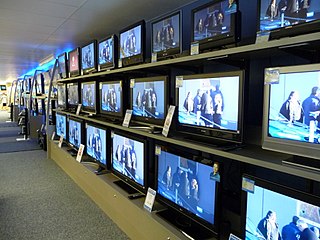
Television (TV) is a telecommunication medium for transmitting moving images and sound. The term can refer to a television set, or the medium of television transmission. Television is a mass medium for advertising, entertainment, news, and sports.

Widescreen images are displayed within a set of aspect ratios used in film, television and computer screens. In film, a widescreen film is any film image with a width-to-height aspect ratio greater than 4:3 (12:9).
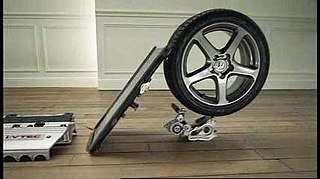
"Cog" is a British television and cinema advertisement launched by Honda in 2003 to promote the seventh-generation Accord line of cars. It follows the convention of a Rube Goldberg machine, utilizing a chain of colliding parts taken from a disassembled Accord. Wieden+Kennedy developed a £6 million marketing campaign around "Cog" and its partner pieces, "Sense" and "Everyday", broadcast later in the year. The piece itself was produced on a budget of £1 million by Partizan Midi-Minuit. Antoine Bardou-Jacquet directed the seven-month production, contracting The Mill to handle post-production. The 120-second final cut of "Cog" was broadcast on British television on 6 April 2003, during a commercial break in ITV's coverage of the 2003 Brazilian Grand Prix.
Bullet time is a visual effect or visual impression of detaching the time and space of a camera from that of its visible subject. It is a depth enhanced simulation of variable-speed action and performance found in films, broadcast advertisements, and realtime graphics within video games and other special media. It is characterized by its extreme transformation of both time, and of space. This is almost impossible with conventional slow motion, as the physical camera would have to move implausibly fast; the concept implies that only a "virtual camera", often illustrated within the confines of a computer-generated environment such as a virtual world or virtual reality, would be capable of "filming" bullet-time types of moments. Technical and historical variations of this effect have been referred to as time slicing, view morphing, temps mort and virtual cinematography.
Video production is the process of producing video content for video. It is the equivalent of filmmaking, but with video recorded either as analog signals on videotape, digitally in video tape or as computer files stored on optical discs, hard drives, SSDs, magnetic tape or memory cards instead of film stock. There are three stages of video production: pre-production, production, and post-production. Pre-production involves all of the planning aspects of the video production process before filming begins. This includes scriptwriting, scheduling, logistics, and other administrative duties. Production is the phase of video production which captures the video content and involves filming the subject(s) of the video. Post-production is the action of selectively combining those video clips through video editing into a finished product that tells a story or communicates a message in either a live event setting, or after an event has occurred (post-production).
The Technology and Engineering Emmy Awards, or Technology and Engineering Emmys, are one of two sets of Emmy Awards that are presented for outstanding achievement in engineering development in the television industry. The Technology and Engineering Emmy Awards are presented by the National Academy of Television Arts and Sciences (NATAS), while the separate Primetime Engineering Emmy Awards are given by its sister organization the Academy of Television Arts & Sciences (ATAS).
Grey Group is a global advertising and marketing agency with headquarters in New York City, and 432 offices in 96 countries, operating in 154 cities. It is organized into four geographical units: North America; Europe, Middle East and Africa, Asia-Pacific, and Latin America.

Evolution, also called The Evolution Of Beauty, is an advertising campaign launched by Unilever in 2006 as part of its Dove Campaign for Real Beauty, to promote the newly created Dove Self-Esteem Fund. The centre of the Unilever campaign is a 75-second spot produced by Ogilvy & Mather in Toronto, Ontario, Canada. The piece was first displayed online on 6 October 2006, and was later broadcast as a television and cinema spot in the Netherlands and the Middle East. The ad was created from the budget left over from the earlier Daughters campaign, and was intended to be the first in a series of such online-focused campaigns by the company. Later such videos include Onslaught and Amy.Evolution was directed by Canadian director Yael Staav and Tim Piper, with sound design handled by the Vapor Music Group, and post-production by SoHo.

U2 3D is a 2008 American-produced 3D concert film featuring rock band U2 performing during the Vertigo Tour in 2006. Directed by Catherine Owens and Mark Pellington, the film contains performances of 14 songs, including tracks from How to Dismantle an Atomic Bomb (2004), the album that the tour supported. The concert footage includes political and social statements made during the shows. It is the band's second feature film, following their 1988 rockumentary Rattle and Hum. Among several cinematic firsts, U2 3D was the first live-action digital 3D film.
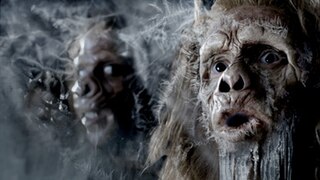
noitulovE is a British television and cinema advertisement launched by Diageo in 2005 to promote Guinness Draught stout. The 60-second piece formed the cornerstone of a £15 million advertising campaign targeting men in their late twenties and early thirties. The commercial shows, in reverse, the adventures of three characters who evolve from mudskippers to present day humans before tasting Guinness in a London pub. The commercial was handled by the advertising agency Abbott Mead Vickers BBDO, with a budget of £1.3M. It was directed by Daniel Kleinman. Production was contracted to Kleinman Productions, with post-production by Framestore CFC. It premiered on British television on 3 October 2005.
3ality Technica, formerly 3ality Digital, was a Burbank, California based company that specialized in high-definition, live-action stereoscopic digital 3D. The company developed production systems, image processing software and other technologies that enabled the creation, post-production and distribution of live-action 3D entertainment.

Carousel is an online advertisement launched in April 2009 by Philips to promote Philips Cinema 21:9 LCD televisions. The 139-second (2m19s) piece is a continuous tracking shot of a frozen moment after an armoured car heist gone wrong, with robbers dressed in clown masks holding a pitched battle with police officers inside a hospital. The campaign surrounding Carousel was led by the central Philips team at DDB in London and produced by advertising agency Tribal DDB in Amsterdam. It was directed by Adam Berg, with production contracted to London-based production company Stinkdigital. The ad went on to become a huge critical success, winning the advertising industry's most prestigious award: the Grand Prix at the Cannes Lions International Advertising Festival. It is only the second online advertisement to win in the Film category, after Dove's Evolution in 2007. Scenes from Carousel were used in the music video for hip hop artist 50 Cent's single "Ok, You're Right".
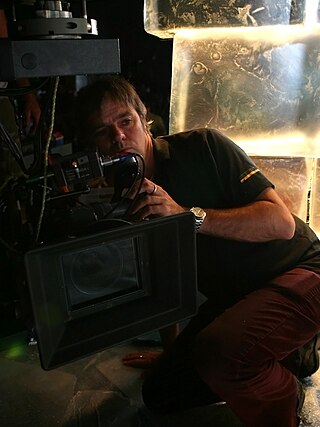
Paul Street is a British Film director, Writer and Producer. He is known for resurrecting Steve McQueen in the 1998 Ford Puma TV Commercial and bringing Denis Hopper face to face with his "Easy Rider" character in the Ford Cougar [TV Commercial]. His other award winning works include "Scales" for BMW, "Robot" for BP, "Field of dreams" for The Ford Motor company" "Anywhere" for BMW, "Home" for UNHCR, and "The grim reaper" for Green King IPA.
Mountain is a 2003 television and cinema advertisement launched by Sony Corporation to promote the PlayStation 2 video game console. The budget for production and advertising space purchases for the 60-second piece amounted to £5m across all markets. The commercial depicts a Brazilian crowd congregating to form a mountain of human bodies, all competing to reach the top of the pile. The campaign surrounding Mountain was handled by advertising agency TBWA London. The commercial was directed by Frank Budgen. Production was contracted to Gorgeous Enterprises, with post-production by The Mill. Mountain premiered in 30 countries on 13 November 2003.

Cake is a television and cinema advertisement launched in 2007 by Škoda Auto to promote the new second-generation Fabia supermini car in the United Kingdom. The 60-second spot forms the centrepiece of an integrated advertising campaign comprising appearances on television, in cinemas, in newspapers and magazines, online, and through direct marketing. The campaign and its component parts were handled by the London branch of advertising agency Fallon Worldwide. Cake was directed by British director Chris Palmer. Production was contracted to Gorgeous Enterprises, with sound handled by Wave Studios. It premiered on British television on 17 May 2007.

"Air War" is a single by Crystal Castles. It was released on 17 December 2007 by Trouble Records as a 7" vinyl. An earlier version of the song was released in July 2006 as the B-Side to "Alice Practice" on Merok Records. The lyrics are from the 1922 James Joyce novel Ulysses in Chapter 11: Sirens. The cover art gathered public interest because of the odd picture of Ethan Kath and Alice Glass with ice cream cones as heads.
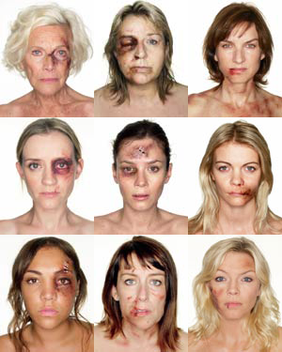
What's it going to take? is a British print and poster campaign launched in 2007 by Women's Aid to boost awareness of domestic violence against women in the United Kingdom. The campaign, handled by advertising agency Grey London, comprised photographs of nine female celebrities made-up to appear as though they were the victims of domestic abuse. The campaign received substantial media attention, with commentary appearing in The Daily Mail, This Morning, and Marie Claire, among others. The What's it going to take? campaign went on to win a number of honours within the advertising industry, including prizes at the 2008 Creative Circle Awards and the Aerial Awards.

Space Chair is a British television and cinema advertisement launched by Toshiba in 2009 to promote its Regza SD LCD televisions. The 60-second piece, following the launch of an armchair into near space attached to a weather balloon, is the second in the "Projects" campaign, following on from Time Sculpture. The launch, which reached 98,268 feet (29,952 m), set a world record for Highest High-Definition Television Commercial. Space Chair premiered on European and Japanese television on 16 November 2009.

Tag is a television and cinema advertisement launched by Nike Inc. in 2001 to promote its line of sportswear in the United States. It was one of four pieces forming the television component of the $25m "Play" campaign, which had been running for several months. Tag was created by advertising agency Wieden+Kennedy. Production was handled by production company Gorgeous Enterprises, who assigned director Frank Budgen to oversee the project. Filming took place in Toronto, Ontario.

Mitch Stratten is a director, sculptor, composer and writer based in the United Kingdom.















